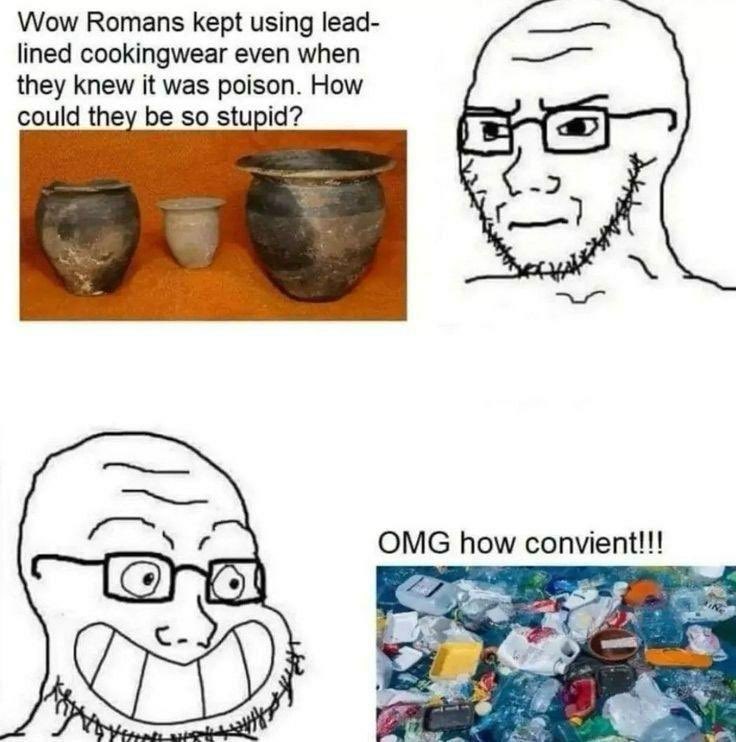this post was submitted on 05 Dec 2023
177 points (93.6% liked)
solarpunk memes
2902 readers
915 users here now
For when you need a laugh!
The definition of a "meme" here is intentionally pretty loose. Images, screenshots, and the like are welcome!
But, keep it lighthearted and/or within our server's ideals.
Posts and comments that are hateful, trolling, inciting, and/or overly negative will be removed at the moderators' discretion.
Please follow all slrpnk.net rules and community guidelines
Have fun!
founded 2 years ago
MODERATORS
you are viewing a single comment's thread
view the rest of the comments
view the rest of the comments

It's actually a bit more complicated. :) They made vessels from copper when they could - copper is a superb heat conductor. But copper gets toxic fast when you cook acidic food. It gets worse if you don't clean your copper vessels. Wikipedia tells:
Despite not having adequate chemistry or medicine, people in old times had a clue - they saw that copper sometimes fouled and turned green, and suspected this was not good, preferring tin-lined copper vessels as the economical alternative to silver-lined copper vessels.
(Needless to say, industries of that time didn't produce stainless steel - maybe some alchemist blacksmith knew enough to make it, but it was not a thing.)
...but the chemistry of the time being what it was - shoddy - sometimes tin was contaminated with lead (Pb), sometimes it was deliberately adulterated with lead, and shit happened.
In the middle ages, guilds had a system of proof marks and inspectors to ensure craftsmen wouldn't add too much lead to tin alloys. The Nuremberg standard for example specified 1 part of lead against 10 parts of tin, but in Luzern, Switzerland, a problematic alloy was used.
As for Romans...